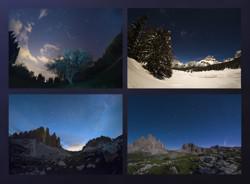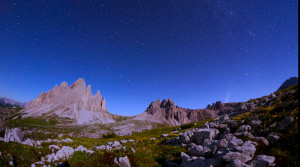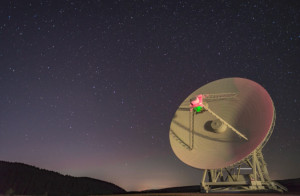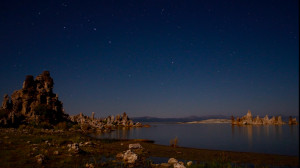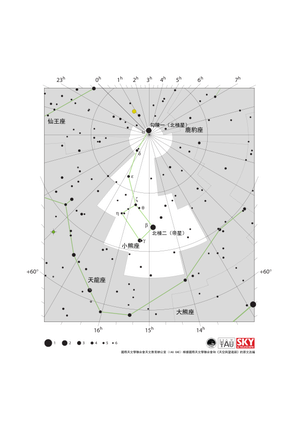Glossary term: 北極星
Description: 北極星是距離北天極最近的亮星(1度以內)。它的正式名稱是小熊座α星,通常被稱為北極星,在中國也叫勾陳一、北辰、宸極。北天球的所有恆星都似乎圍繞著它旋轉,因此它是進行導航和天體測量的絕佳固定點。它的地平高度可以提供觀測地點的大致緯度。不過,由於地球自轉軸的進動,北極星在天球上的位置正在慢慢發生變化,因此再過幾個世紀,北極星就不再能指示北天極的位置了。
北極星是一個由三合星系統。主星是一顆黃超巨星,被命名為北極星Aa;伴星是一顆較小的主序星,被命名為北極星Ab。它們在非常近的軌道上相互繞轉運行。這對恆星還有一顆較大的伴星——北極星B,它是一顆主序星,在2400個天文單位的距離上運行,軌道週期約為29.3年。北極星B可以用普通望遠鏡分辨出來。哈勃太空望遠鏡能夠分辨出北極星三合星系統的所有三個成員。北極星的視星等會有波動,這是因為北極星Aa是一個仙王座變星。北極星系統距離地球約447光年。
Term and definition status: The original definition of this term in English have been approved by a research astronomer and a teacher The translation of this term and its definition is still awaiting approval
This is an automated transliteration of the simplified Chinese translation of this term
The OAE Multilingual Glossary is a project of the IAU Office of Astronomy for Education (OAE) in collaboration with the IAU Office of Astronomy Outreach (OAO). The terms and definitions were chosen, written and reviewed by a collective effort from the OAE, the OAE Centers and Nodes, the OAE National Astronomy Education Coordinators (NAECs) and other volunteers. You can find a full list of credits here. All glossary terms and their definitions are released under a Creative Commons CC BY-4.0 license and should be credited to "IAU OAE".
If you notice a factual or translation error in this glossary term or definition then please get in touch.
Related Media
如咪如幻的星空和氣流
Credit: Likai Lin/IAU OAU
License: CC-BY-4.0 Creative Commons 姓名標示 4.0 國際 (CC BY 4.0) icons
四季的北斗
Credit: Giorgia Hofer/IAU OAE
License: CC-BY-4.0 Creative Commons 姓名標示 4.0 國際 (CC BY 4.0) icons
北斗七星和新智彗星 C2020 F3
Credit: 喬爾賈·霍弗/國際天文學聯合會教育辦公室 (CC BY 4.0)
License: CC-BY-4.0 Creative Commons 姓名標示 4.0 國際 (CC BY 4.0) icons
用撒丁島射電望遠鏡 SRT 觀測北斗七星
Credit: Antonio Finazzi/IAU OAE (CC BY 4.0)
License: CC-BY-4.0 Creative Commons 姓名標示 4.0 國際 (CC BY 4.0) icons
莫諾湖上空的北斗七星
Credit: Fabrizio Melandri/IAU OAE (CC BY 4.0)
License: CC-BY-4.0 Creative Commons 姓名標示 4.0 國際 (CC BY 4.0) icons
Related Diagrams
Octans Constellation Map
Credit: Adapted by the IAU Office of Astronomy for Education from the original by IAU/Sky & Telescope
License: CC-BY-4.0 Creative Commons 姓名標示 4.0 國際 (CC BY 4.0) icons
小熊座星圖
Credit: 國際天文學聯合會天文教育辦公室(IAU OAE)根據國際天文學聯合會和《天空與望遠鏡》的原文改編
License: CC-BY-4.0 Creative Commons 姓名標示 4.0 國際 (CC BY 4.0) icons
Related Activities
Navigating with the Kamal – Northern Hemisphere
astroEDU educational activity (links to astroEDU website) Description: How did Arabian sailors navigate at sea?
License: CC-BY-4.0 Creative Commons 姓名標示 4.0 國際 (CC BY 4.0) icons
Tags:
History
, Geography
, Coordinates
, Celestial navigation
, Arabia
, Kamal
Age Ranges:
14-16
, 16-19
Education Level:
Middle School
, Secondary
Areas of Learning:
Modelling
, Social Research
Costs:
Low Cost
Duration:
1 hour 30 mins
Group Size:
Group
Skills:
Analysing and interpreting data
, Asking questions
, Communicating information
, Developing and using models
, Planning and carrying out investigations

